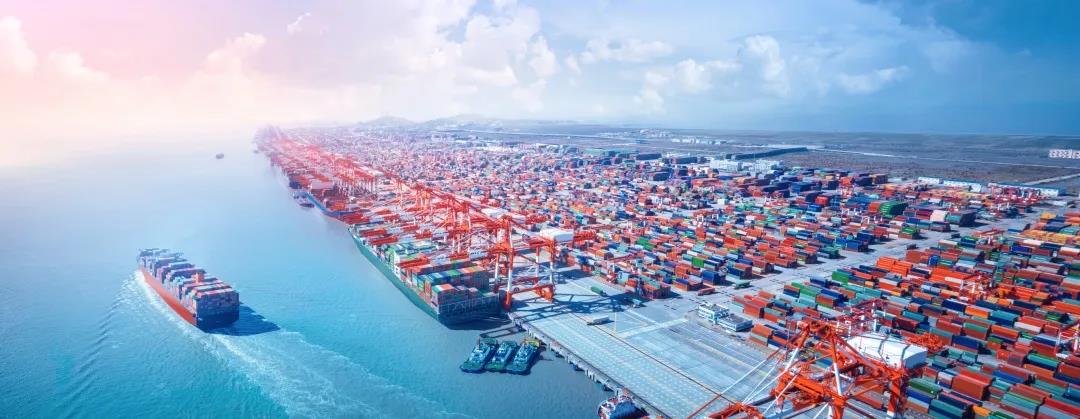Despite the covid-19 pandemic, Guanghua Professor Tang Yao believes that the post-outbreak global value chain and supply chain will not suffer severe disruption and China will remain the center of manufacturing.
Over the past three decades, rapid global development of technology, trade and investment has seen industrial chainc branching out to ever more countries. Research in the U.S., design in Germany, manufacturing in Southeast Asia, assembling in Vietnam and service center in Canada... This activity network is a global value chain with extra value added at the national and industrial level as well as a supply chain linking all sections of along the production stream for a company.
According to Tang, with further opening up,China is playing an increasingly large role in the global value chain on a par with the U.S. and Germany. The country is also gearing up efforts to deepen industrial upgrades to enhance its quality contribution to the global value chain and boost its advantage in the division of world industrial activities.

DOMESTIC PRODUCTION CAPACITY
In the early days of the covid-19 outbreak, manufacturers across the world were worried that China’s supply would be disrupted while Chinese firms shared the concern that their inabilities to fulfill export orders would result in long-term business losses. Some observers thought this would push the global supply chain to leave China faster. Tang draws a comparison between the current incident and the 2011 earthquake in Japan that reversed the country’s previous production capacity increase. “However, what’s different to the post-quake Japan is that covid-19 didn’t cause physical damage to China’s economic output,and the risk of supply disruption is becoming notably lower as most medium- and large-size enterprises have resumed operations.”
OVERSEAS CAPACTITY
As the outbreak extends overseas, economic activities in many countries have ground to a halt, and Chinese firms began worrying that disruption in overseas supply will harm the normal operation of China’s manufacturing. Meanwhile, orders from overseas firms of products involving parts made in China also plunged.
SPENDING DEMAND
It is very likely that the pandemic will cause global economic output in 2020 to decrease, and global economy will go into a severe recession. China’s manufacturing industry is closely tied with overseas partners, and such a recession means rapidly contracted overseas demand. Having suffered the blow dealt by covid-19 in the first quarter in China, the country’s manufacturers will now be stuck between plummeting demand both domestic and overseas.
“After the pandemic, many countries will reconsider the security issues in their emergency supplies, but the global value chain and supply chain will not suffer notable disruption and division of global economic activities will not regress,” Tang says, adding that China will continue to be the center of world manufacturing.
According to Tang, it is an indisputable fact that division of activities boost economic efficiency, and pandemic is only one of many issues that will surely crop up in the modern world’s pursuit of work division and social networking. “What countries should think about is how to jointly boost economy and health security amid an interdependent world economic environment,instead of retreating to an economic island.”

CHINA’S ADVANTAGES IN EMERGENCY
Tang stresses that it’s not by chance that China has become the center of world manufacturing. In addition to high-quality work force, intact industrial distribution, a developed supply chain,adequate infrastructure and a regional concentration effect, China is also characterized by its high efficiency in responding to an emergency, he says, citing fast and nationwide anti-outbreak efforts headed by the central government and the current resumption of work. The same efficiency is also manifested in the country’s reconstruction efforts after the devastating earthquake that hit southwest China in 2008.
Tang points out that most overseas firms, at any rate, cannot afford to reshuffle its supply chain. A single firm can, to some extent,optimize its supply chain but is hardly able to mobilize a large-scale cross-country chain maneuver since many of these firms remain small buyers in the markets of certain components. Meanwhile, the development of a global chain requires long-term investment and financing support, and with the overseas financial market oscillating and the U.S. vulnerable to liquidity risks, fund for large-scale supply chain reshuffles will be in short supply for the foreseeable future.
Tang urges China to actively stimulate domestic demand, stabilize employment and optimize various industries in order to cope with a post-covid-19 world. Detailed efforts include more input into research and development to replace imports and consolidate the supply chain, encouraging firms to temporarily shelf their overseas expansion plans amid uncertainty and focus on domestic market, boosting some firms’core roles in the chain while allowing inefficient ones to go bust.
“China has to open up further and engage more in global economic cooperation while pursuing quality growth,” Tang stresses,calling on the country to first strengthen ties with neighboring countries and those in the “Belt and Road” initiative to boost their collective anti-risk capacity. He cites East Asia and Southeast Asia as a core region for world value chain and supply chain in the future that China should enhance cooperation with.
“Resisting trade protectionism and pursuing mutual benefits to achieve inclusive economic growth will be the key once this pandemic is gone,” Tang adds.
 Programs
Programs